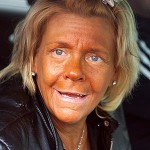
There is no such thing as a healthy tan, at least not one caused by UV rays. Sun exposure is the leading cause of skin cancer which makes it one of the most preventable types of cancer.
So what is the safest way to bronze? Here are some tips on how to get a healthy glow after the pale of winter’s hibernation.
What are the latest products in self-tanning?
There are salon spray tans to at-home airbrush kits, self-tanner creams to rub on, and even Tan Towels, where color is applied with one body wipe and takes seconds for it to set in. Products have come a long way from their original shades of Oompa-Loompa orange. The active ingredient is dihydroxyacetone (DHA), a mostly plant-derived simple carbohydrate that binds to proteins in the top layer of skin, causing it to darken or stain. Because the coloring process takes place only in the surface layers of the skin, the color lasts only as long as those layers stay on your body—five to seven days. After it sloughs off, it’s time for a reapplication. Most tanners still rely on DHA; however, some are also adding anti-aging and moisturizing elements.
Certain tanners advertise as moisturizers first and tanners second contain smaller traces of DHA that have a gradual but cumulative effect, producing a tan after repeated use. Others are focusing on “antioxidants, paraben-free products, botanicals, and natural instant bronzers such as walnut shell and coffee bean extracts – even the stem cells of apples, which purport to have an anti-aging effect. And there’s one more big benefit; natural tanners tend to last longer than other tanners.
Are there any risks involved?
People who use self-tanners need to remember to practice proper sun protection. Unlike a natural tan, self-tanning provides little UV protection, so a fake tan requires real sunblock.
How dangerous is sun exposure?
According to the American Academy of Dermatology, more than one million new cases of skin cancer are diagnosed in the United States each year, outnumbering all other cancers combined. One in five Americans will develop the disease at some point. In a study conducted by New Age Skin Research Foundation and published in the journal of “Melanoma Research” found that frequency of applying sunscreen when patients went outdoors increased from 27 to 69%, after they diagnosed with malignant melanoma.
Prevention and early detection are critical: The five-year survival rate for people whose melanoma (the deadliest form of skin cancer) is detected and treated before it spreads to the lymph nodes is 98 percent. An estimated 76,250 new cases of melanoma will occur in the United States this year, according to the American Cancer Society. This is a significant rise of 6,020 cases compared to last year. The number of melanoma-related deaths rose as well, by almost 400 cases – from 8,790 deaths in 2011 to a predicted 9,180 deaths in 2012.
Who is at risk for melanoma?
It’s a myth that melanoma primarily affects older people: It remains the number one cancer affecting adults aged 25-29. A new study by the Skin Cancer Foundation has revealed an alarming rise in melanoma among people aged 18 to 39: over the past 40 years, rates of this potentially deadly skin cancer grew by 800 percent among young women and 400 percent among young men.
Are tanning beds really that bad?
Researchers speculate that the popularity of tanning beds may be one cause of these higher rates. The World Health Organization has declared indoor tanning devices to be cancer-causing agents that are in the same dangerous category as tobacco and arsenic: At least 31 states, including NY State, now restrict access to indoor tanning equipment either through banning their use by minors or requiring parental consent. Exposure to UV radiation from indoor tanning lamps has been linked to both melanoma and squamous cell cancer, and using them for the first time before age 35 increases melanoma risk by as much as 75 percent.
According to a recent study conducted by Harvard Medical School and published in the Journal of Clinical Oncology, there is a significantly higher risk of basal cell carcinoma among people who used tanning beds during high school and college compared with tanning bed use at ages 25 to 35 years. New research confirms that those who make just four visits to a tanning booth per year can increase their risk for melanoma by 11 percent, and their risk for the two most common forms of skin cancer, basal cell carcinoma and squamous cell carcinoma, by 15 percent.
The damage from the UV radiation of tanning beds and the sun is cumulative and often irreversible. The younger people are when they start to tan, the higher their risk of developing skin cancer in their lifetimes. So if you must have a tan, do it the fake way.
Come Get Your Yearly Skin Cancer Screening!
Regardless of your tanning habits, yearly skin cancer screenings are crucial to detect the presence of skin cancer in its earliest, most curable stages. Contact us today to schedule your skin cancer screening. At Advanced Dermatology, PC, our board-certified dermatologists are experts at diagnosing and treating skin cancer and other conditions of the hair, skin and nails. In the event of skin cancer, we offer the latest treatment methods, including Mohs surgery by our board-certified Mohs surgeons. Our conveniently located offices welcome patients from Queens (Bayside, Flushing), Long Island – Nassau/Suffolk (Roslyn Heights, West Islip, Commack, East Setauket), New York City (Upper West Side, Upper East Side), Brooklyn (Park Slope) Westchester County (Ossining, Briarcliff Manor), Bergen County, NJ, Union County, NJ, and all surrounding areas.
